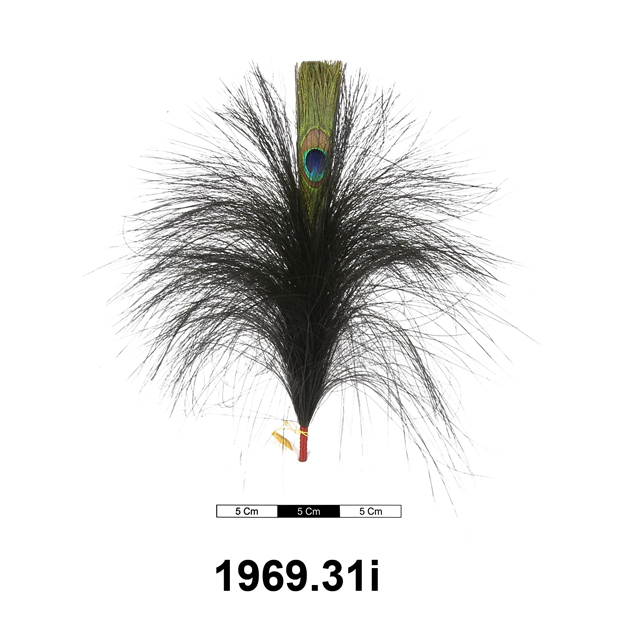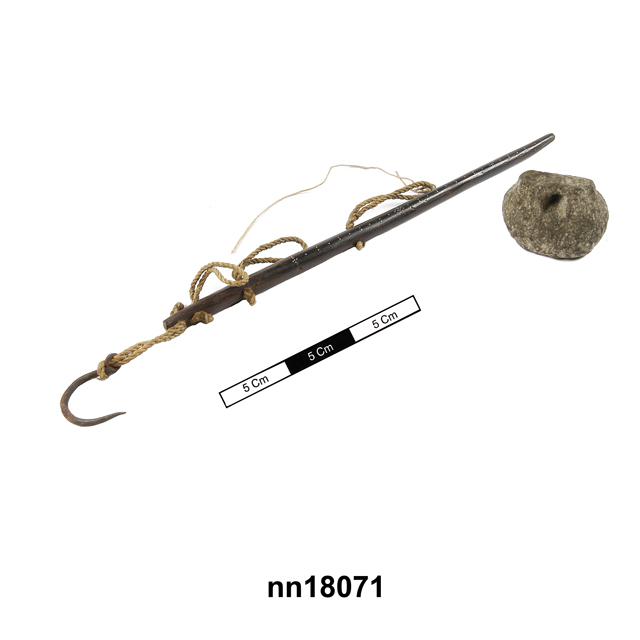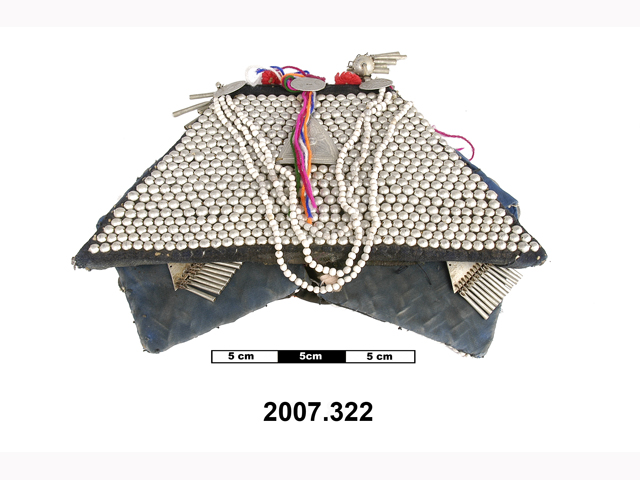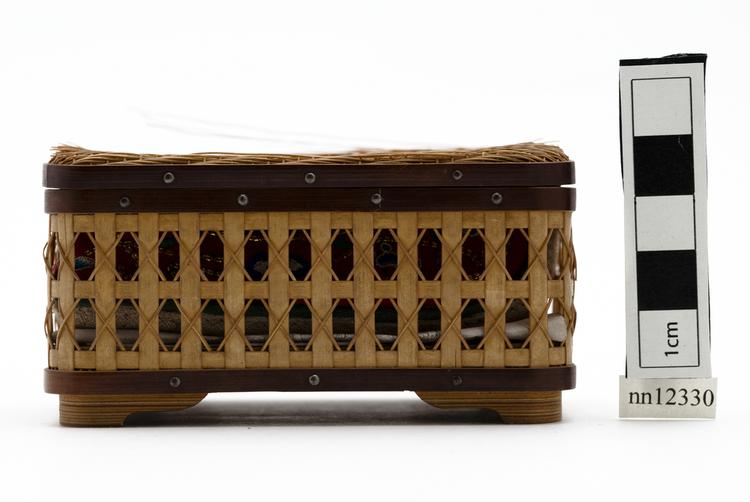
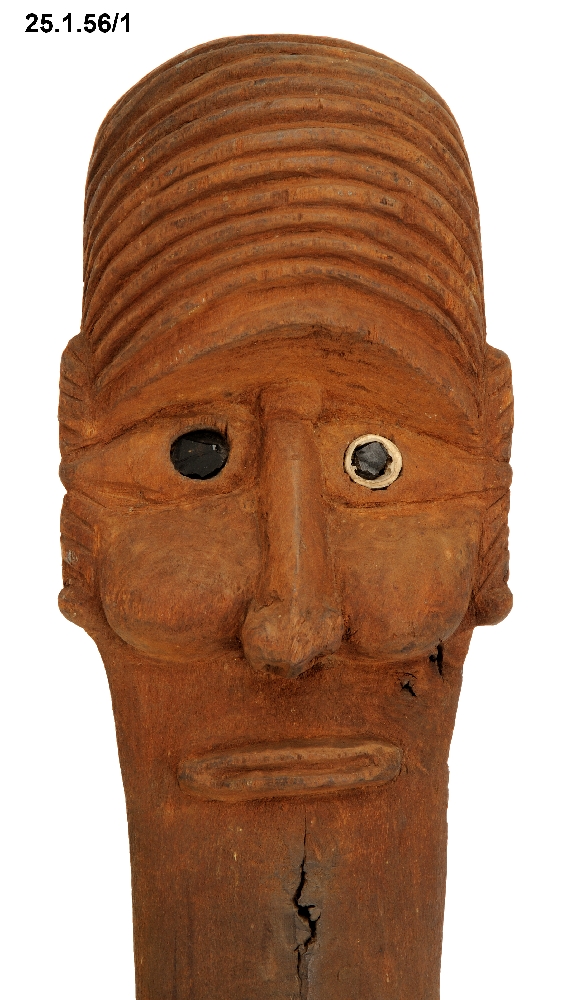
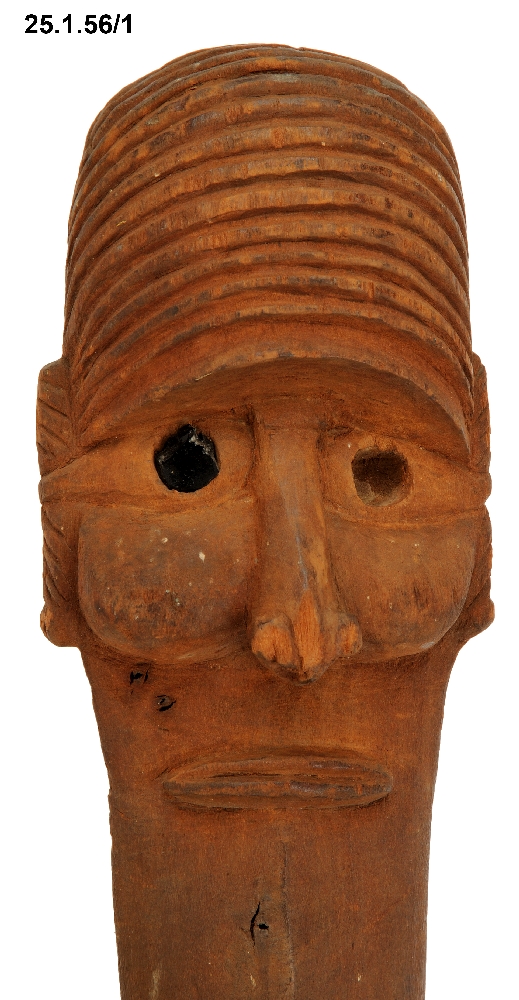
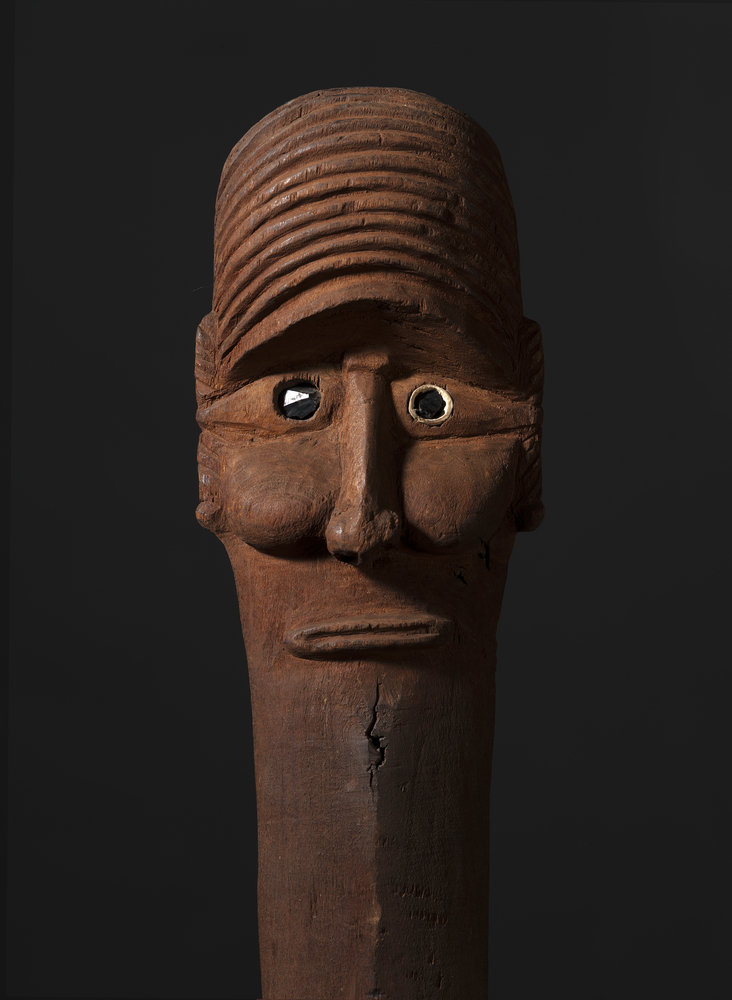
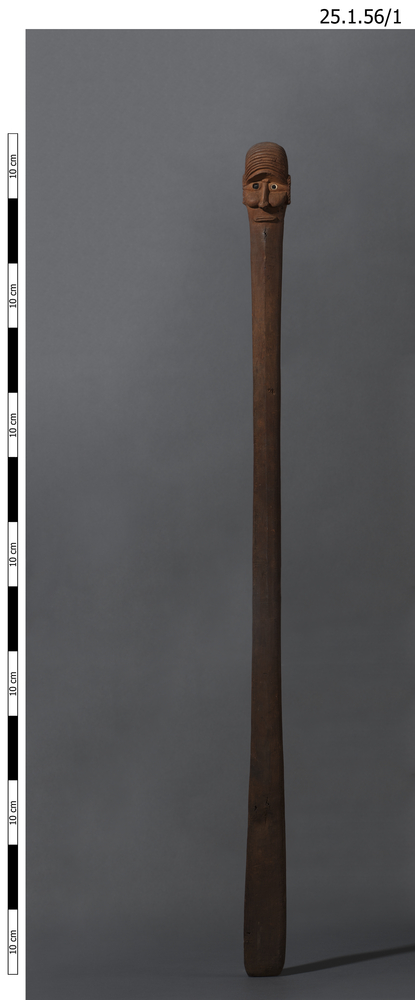
Wooden staff, from Easter Island, made of light hard wood, with a slight rib running down the middle, a double face at one end with bulbous cheeks, possibly obsidian eyes (one is missing) and a curved, ribbed headdress the other end is square-ended.
Bifacial Chiefly Staff with Obsidian Eyes, Ua, Rapa Nui (Easter Island), Eastern Polynesia. Rapa Nui (Easter Island) was among the most isolated inhabited places on earth. It is justifiably famous, however, for the remarkable massive stone statues (moai) that its Polynesian inhabitants carved, transported and erected on raised ritual platforms called ahu. Each of these ahu platforms was sacred to a particular noble family among the Rapanui, who were divided into a ruling class known as the 'long-ears' and a commoner class, the 'short-ears', who laboured to erect these monuments for them. This ua staff, carved from scarce toromiro wood (Sophora toromiro), was a badge of long-ears status, and its two faces exhibit the distended earlobes that gave the ruling Rapanui class their name. Some sources have argued that the busts at the ua’s head are portraits of their original owners, although these objects were named individuals themselves, and passed down through aristocratic lines as heirlooms. Wood. Early 19th Century. Formerly in the private collection of Miss M. Grace Jephson.



